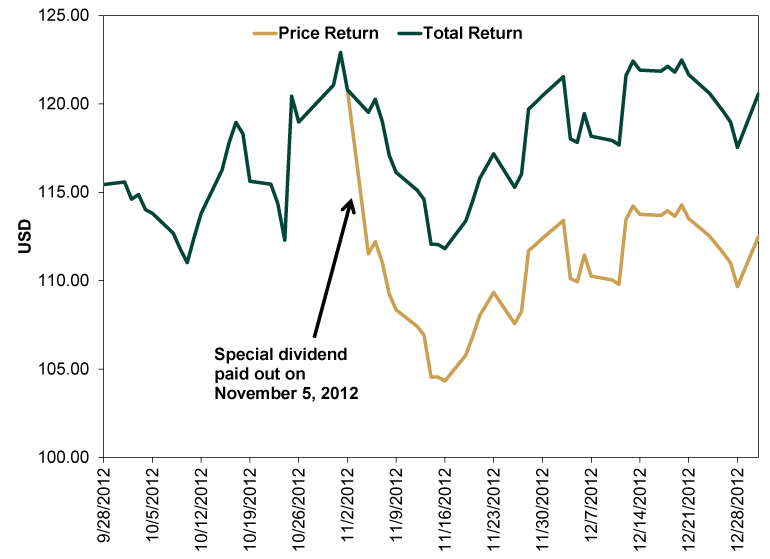Personal Wealth Management / Market Analysis
Dividends Are Nice, but They Aren’t Safety Blankets
High-dividend stocks’ reputation as a safe haven is a myth.
Editors’ Note: MarketMinder doesn’t make individual security recommendations. Those mentioned below merely represent a broader theme we wish to highlight.
Global stocks enjoyed a nice rally last week, but it hasn’t much calmed investors’ nerves. Headlines continue warning of worse to come, and there is a cottage industry in articles featuring investment tactics for uncertain times. One supposed tactic getting a lot of ink: dividends. This isn’t unusual. In our experience, interest in high dividends tends to spike whenever markets get rocky—largely because the dividend payments offer perceived stability. In our view, this is a short-sighted and flawed viewpoint. We like dividend stocks just fine, but they aren’t safe havens.
Much of dividends’ allure during volatility stems from a fundamental misperception about what dividends are. You can hear it in sentiments like, stocks may be down, but at least these dividends get me a nice yield. Problem is, this statement presumes dividends are a return on your investment, which isn’t true. Dividends are a return of capital. Unless you reinvest them, they don’t add to returns.
Yes, dividends are some companies’ way of returning earnings to shareholders. But companies pay those dividends in lieu of reinvesting earnings back into their core business to fund long-term growth. Every dividend payment peels off a small slice of the company’s value. Therefore, the company’s market cap—and stock price—drop by the amount of every dividend paid out. Or, more simply, companies pay dividends out of their stock prices. They are returning some of your principal back to you.
This can seem like an abstract concept, so let us show a real-world example. In November 2012, Wynn Resorts paid a one-time $7.50 dividend. As Exhibit 1 shows, in the run-up to this event, Wynn’s price and total returns (that is, price plus reinvested dividends) were identical. But then came the ex. dividend date, which is the date you must have owned a stock in order to receive the dividend. It is called the “ex dividend” date because the stock price becomes exclusive of the dividend—or, in simpler terms, the dividend is subtracted from the stock price. Once Wynn’s stock went ex. dividend, its price return diverged from its total return by roughly the amount of the dividend paid.
Exhibit 1: Wynn Resorts’ 2012 Special Dividend

Source: FactSet, as of 5/5/2020. Wynn Resorts price and total returns, 9/28/2012 – 12/31/2012.
This is why it is a mistake to liken stocks’ dividend yields to bonds’ interest payments. Interest is a return on your investment. You receive the interest payments over the bond’s lifespan and get your entire principal back when the bond matures. By contrast, dividends generate compound growth only if you reinvest them, which cuts against the emotional appeal of owning them during market downturns. Then too, companies often cut dividends when times get lean, zapping all trace of the alleged safety blanket.
High-dividend stocks aren’t immune to bear markets, either. In 2020’s lockdown-induced bear market, the MSCI World High Dividend Yield Index fell -32.7%, which was only moderately less than the MSCI World Index’s -34.0% drop.[i] In the bear market that accompanied 2007 – 2009’s global financial crisis, the MSCI World High Dividend Yield Index’s -63.4% drop was even worse than the MSCI World Index’s -57.8% fall.[ii] Dividends didn’t offer protection on either occasion.
Again, we like dividends. We just think it is a mistake to target them, either for cash flow or for a performance boost when times get tough. Stocks are stocks, and performance depends on a host of variables—not least sector and country, along with a litany of company-specific attributes—not whether a company pays out some of its value now and then.
If you would like to contact the editors responsible for this article, please message MarketMinder directly.
*The content contained in this article represents only the opinions and viewpoints of the Fisher Investments editorial staff.
Get a weekly roundup of our market insights
Sign up for our weekly e-mail newsletter.

See Our Investment Guides
The world of investing can seem like a giant maze. Fisher Investments has developed several informational and educational guides tackling a variety of investing topics.





